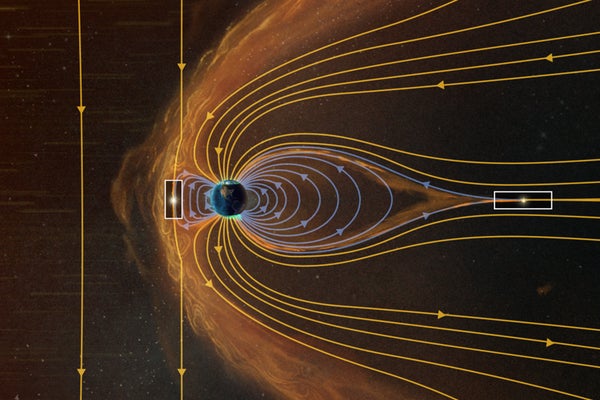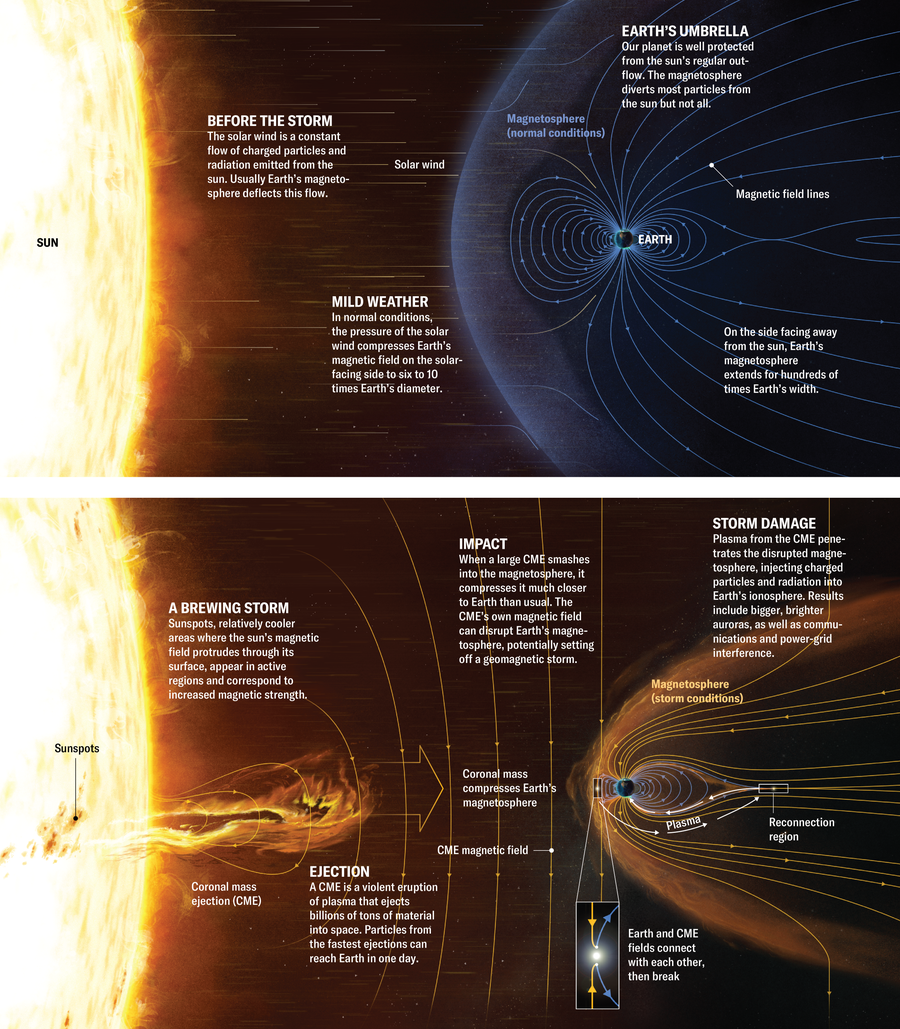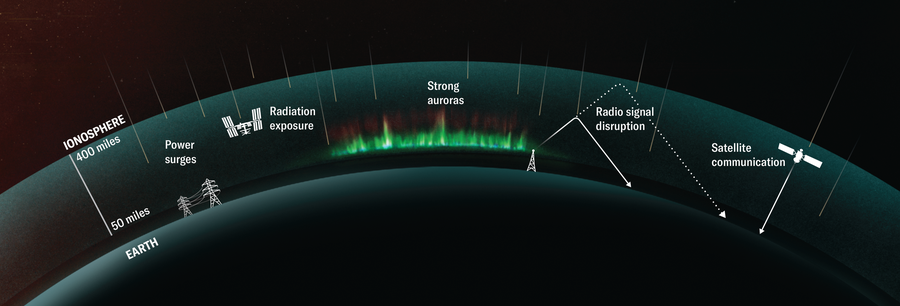Expect Auroras, Solar Flares and More Space Weather from the Solar Maximum

Expect Auroras, Solar Flares and More Space Weather from the Solar Maximum
Space weather is heating up in our current solar cycle peak
Aurora sightings may become more common, and satellite communications and power grids could be disrupted, as solar activity peaks. Our nearest star is always volatile, but its magnetic action waxes and wanes on an 11-year loop. The sun is thought to be in a peak now, although scientists will need another year or two to analyze data before they can say for sure. During this high point we should see more sunspots (dark areas where the sun’s magnetic field reaches the surface) and solar storms (ejections of energy from the sun that reach into space and can affect Earth).
During a storm, energy explodes from the sun in the form of light and particles (called a solar flare) and a plasma and magnetic field (called a coronal mass ejection, or CME). If a CME hits Earth’s magnetosphere, it can wreak havoc on our planet’s magnetic field, injecting energy, plasma and particles and heating up and distorting Earth’s upper atmosphere, the ionosphere. All of this chaos can hinder radio signals between satellites and induce strong electric currents that can damage power grids. On the plus side, we often get a nice view of the Northern and Southern Lights as a surge of particles hits Earth’s atmosphere at the poles.
“We need to better prepare for space weather,” says heliophysicist Lisa Upton, who co-chaired the NASA/NOAA Solar Cycle Prediction Panel for the current cycle. “Write your congresspeople and tell them to support solar physics.”
On supporting science journalism
If you’re enjoying this article, consider supporting our award-winning journalism by subscribing. By purchasing a subscription you are helping to ensure the future of impactful stories about the discoveries and ideas shaping our world today.
WHAT IS SPACE WEATHER?
The amount of energy, radiation and plasma streaming off the sun into space—collectively known as the solar wind—varies as the sun’s magnetic activity changes. Extreme events, such as CMEs and strong solar flares or storms, generate space weather. Earth’s atmosphere typically acts as an umbrella protecting us from the bulk of the sun’s influence. During severe space weather, however, it can break through this boundary and affect our planet.

FORECASTING
Like the climate on Earth, space weather has its own seasons, referred to as solar cycles. About every 11 years the sun’s magnetic field reaches its maximum activity level. During solar minimum we observe around one CME a week, but during maximum, where we are right now, we see about two to three a day. Scientists can predict solar activity by observing the number of sunspots visible on our star. During minimums we may see just a few sunspots or even none, whereas during solar maximum we can expect up to 200 at a time.

EFFECTS
Space weather affects the density and turbulence of Earth’s ionosphere. As radio signals travel through this layer of the atmosphere, its changing thickness may send waves on distorted paths, affecting communications transmission. And an influx of particles streaming toward Earth can cause brighter and more widespread auroras, as well as surges in power grids that lead to outages.
